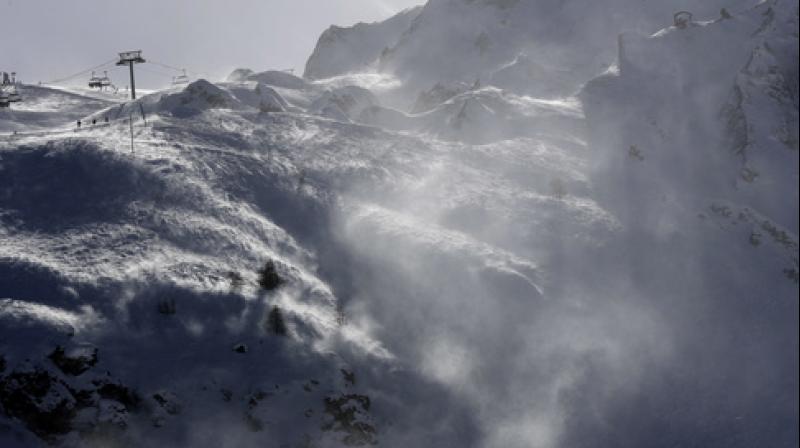Avalanche buries 'many' skiers on French ski slope

Tignes: An avalanche hit a ski slope in the popular French Alps resort of Tignes on Tuesday, engulfing "many" skiers, police said. Rescue workers and sniffer dogs were being deployed and staff mobilised at the sprawling resort, an AFP journalist said at the scene.
"According to witnesses there are many people under the avalanche," a police spokesman told AFP. Poor visibility is so far preventing the deployment of rescue workers by helicopter to the scene, which is close to where an avalanche last month killed four people who were exploring in an off-piste area.
TV pictures showed firefighters' vehicles and ambulances at the scene. The avalanche hit at about 10:00 am (0900 GMT). Tuesday's avalanche risk -- normally assessed only for off-piste and closed slopes -- was at four on a scale of five. At level five, all slopes are closed.
The avalanche on February 13, which hit during school holidays, was a "slab" avalanche, caused when dense wind-packed snow breaks off from a slope. Rescuers quickly retrieved the bodies because the victims were carrying transmitters designed to assist in locating them.
They had been only a few dozen metres from a ski lift when the 400-metre-wide avalanche ripped down the mountain. That incident brought to 14 the number of accidents recorded in the French Alps and Pyrenees so far this winter, claiming a total of seven lives. Last winter there were 45 accidents and 21 fatalities.
One of the worst avalanches in the Alps in the past decade took place in the summer of 2012 in the Mont-Blanc range. Nine climbers from Britain, Germany, Spain and Switzerland were killed as they tried to scale the north face of Mont Maudit, which translates as Cursed Mountain. Avalanches can travel at speeds of up to 400 kilometres (250 miles) per hour.
In January, 29 people died in Italy after an avalanche buried a hotel in the central town of Rigopiano. The force of that impact was calculated by police as being equivalent to the three-storey stone and wood structure being hit by 4,000 fully loaded trucks.
Most avalanches are the result of a combination of weather and geological factors. In general, an avalanche results from fresh heavy snowfall that fails to stick to snow already on the ground.

